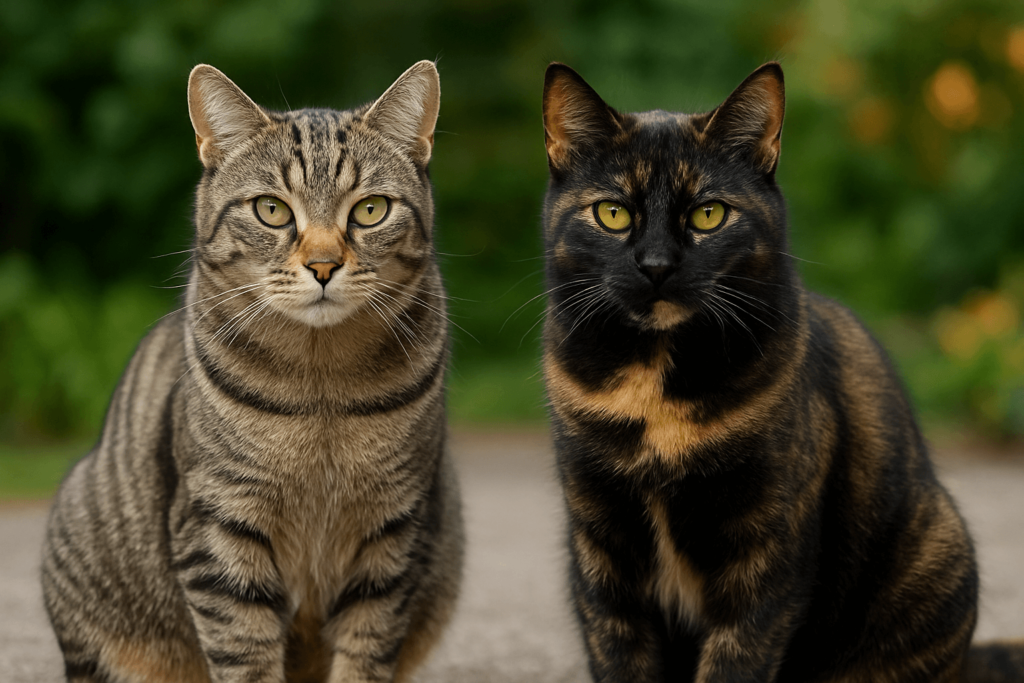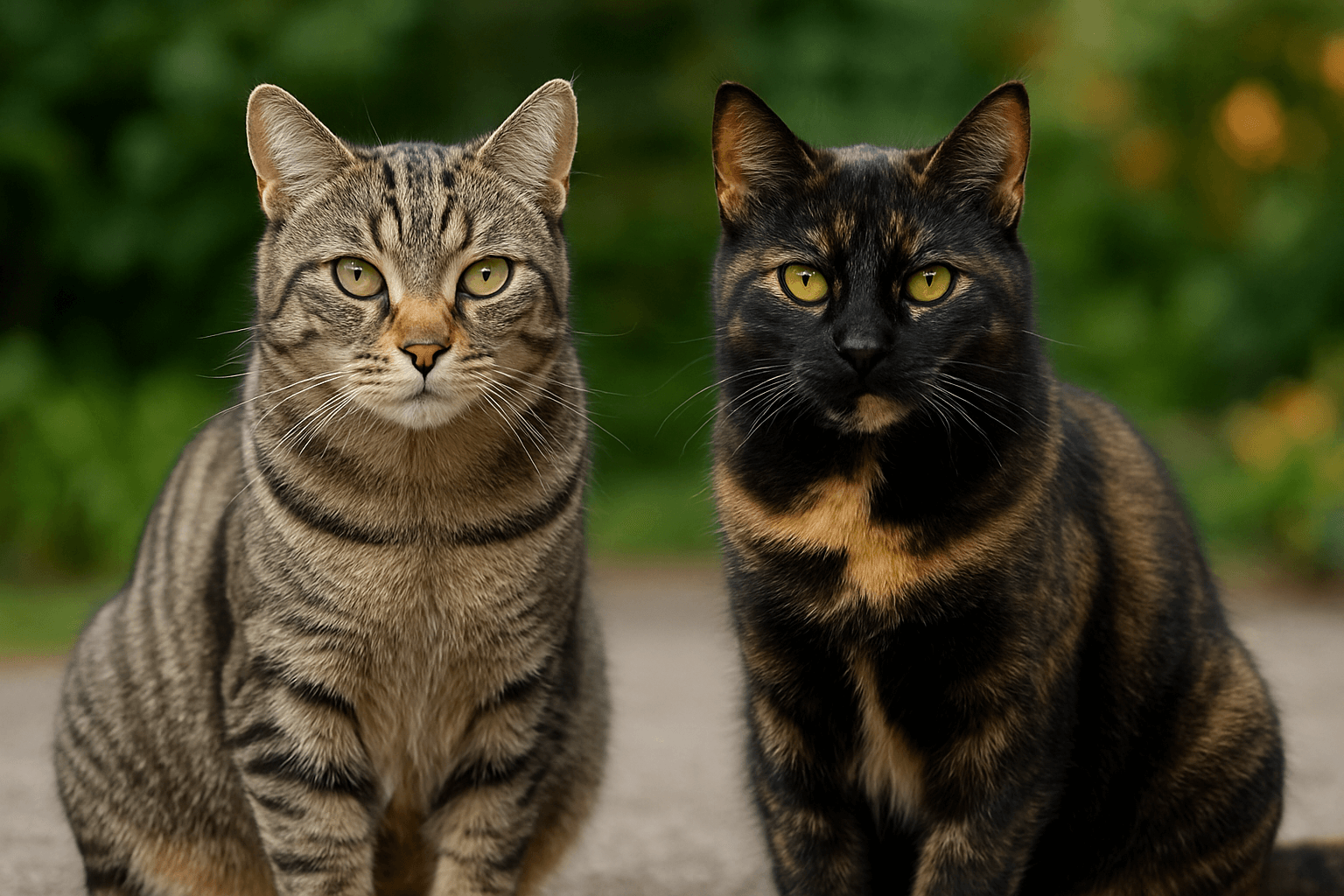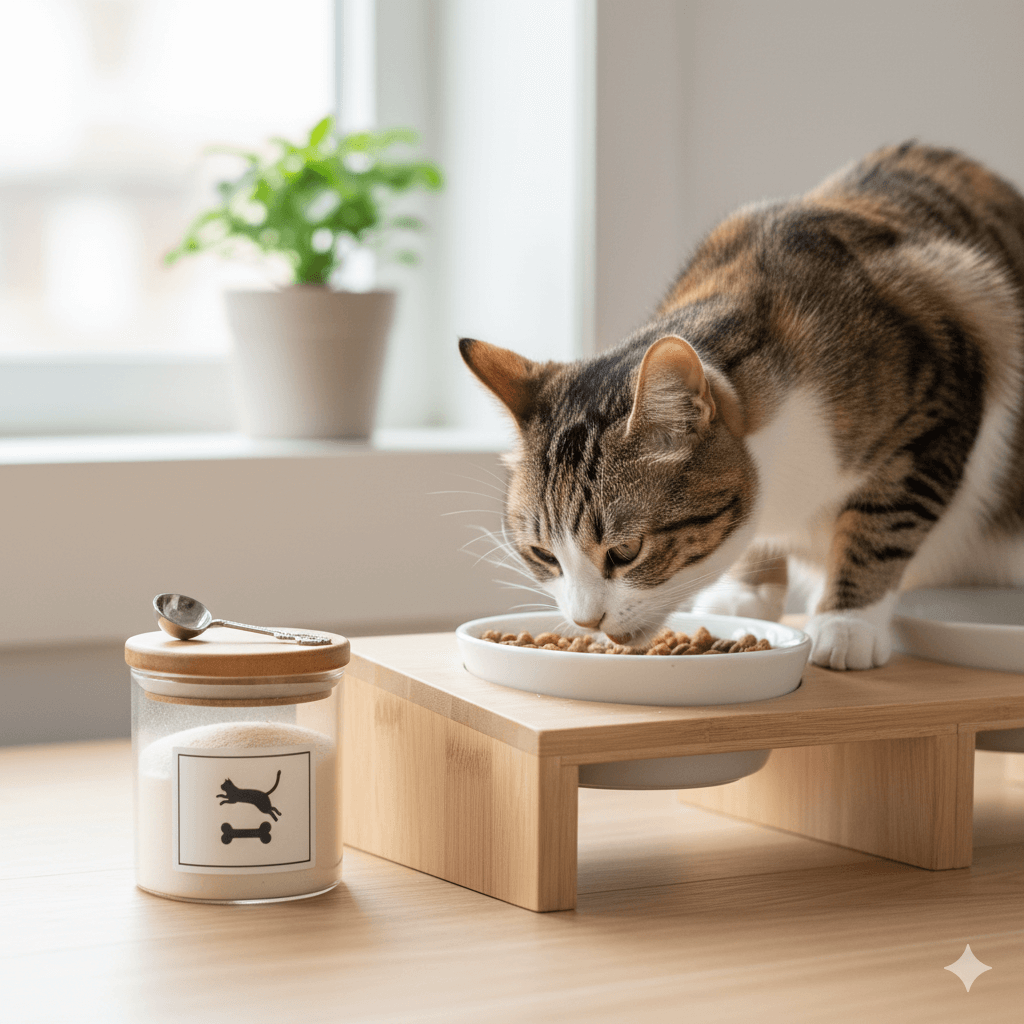Tabby Cat vs Tortoiseshell: What’s the Difference?
When it comes to feline companions, few patterns are as iconic as the tabby cat and the tortoiseshell. Both are beloved for their unique appearances and captivating personalities, but they differ in several ways—from coat patterns to genetic traits and even temperament. Whether you’re a first-time cat owner or simply curious about these two fascinating types, understanding their distinctions can help you appreciate their individual charm. In this blog post, we’ll explore the differences between tabby cats and tortoiseshell cats, shedding light on their genetics, behavior, and care needs.
Understanding the Coat Patterns of Tabby Cats and Tortoiseshells
The most obvious difference between tabby cats and tortoiseshell cats lies in their distinctive coat patterns. These patterns not only make them visually striking but also reflect unique genetic characteristics.
Tabby Cats Have Striped, Spotted, or Swirled Coats:
Tabbies are known for their bold markings, which often include stripes, spots, or swirling patterns. Their coats come in four main types: mackerel, classic, spotted, and ticked.Tortoiseshell Cats Feature Mottled Black and Orange Patches:
Tortoiseshell cats, affectionately called “torties,” have marbled coats that blend black and orange hues. Diluted versions may appear gray and cream instead.Tabby Cats Often Display an “M” Marking on Their Foreheads:
Many tabby cats sport a distinct “M” shape above their eyes, adding to their charm and mystique.Tortoiseshell Patterns Are Almost Exclusively Female:
Due to the genetic link between coat color and sex chromosomes, nearly all tortoiseshell cats are female. Male tortoiseshells are extremely rare and often sterile.Calicos Are Related to Tortoiseshells but Include White Fur:
While tortoiseshells lack white fur, calico cats—a related pattern—combine tortoiseshell colors with white patches.
These coat differences highlight the beauty and complexity of feline genetics, making each cat truly one-of-a-kind.

Personality Traits of Tabby Cats vs Tortoiseshell Cats
While every cat has its own personality, certain trends emerge when comparing tabby cats and tortoiseshell cats. Understanding these tendencies can help you better connect with your feline friend.
Tabby Cats Are Often Playful and Social:
Many tabby cats enjoy interactive play and thrive in environments where they receive plenty of attention and stimulation.Tortoiseshell Cats Are Known for Being Feisty and Independent:
Tortoiseshell cats, or “tortitude,” are famous for their strong-willed nature and occasional sassy behavior.Tabby Cats Tend to Be More Predictable in Temperament:
With their adaptable and friendly demeanor, tabby cats are often considered easier to integrate into new homes.Tortoiseshell Cats May Show Affection on Their Own Terms:
While loving, tortoiseshell cats often prefer to initiate cuddles and interactions rather than being overly clingy.Both Types Can Form Strong Bonds with Their Owners:
Regardless of their differences, both tabby and tortoiseshell cats are capable of forming deep, affectionate relationships with humans.
By appreciating these personality nuances, you can better understand what makes each type of cat special.
Check this guide 👉Himalayan Cat vs Maine Coon: Best 7 Expert Tips!
Check this guide 👉Siamese vs Burmese Cat: Best 7 Expert Tips!
Check this guide 👉Savannah Cat vs Regular Cat: Best 7 Expert Tips!
Tabby Cat Characteristics | Tortoiseshell Cat Characteristics |
|---|---|
Bold striped, spotted, or swirled patterns | Mottled black and orange patches |
Commonly male or female | Almost exclusively female |
Friendly and social disposition | Independent and feisty temperament |
Distinct “M” marking on forehead | No specific markings beyond patchwork |
Adaptable to various environments | Prefers calm and stable surroundings |
Care Needs for Tabby Cats vs Tortoiseshell Cats
While both tabby and tortoiseshell cats share similar care requirements, subtle differences exist based on their temperaments and activity levels. Here’s how to cater to their individual needs.
Tabby Cats Benefit from Interactive Toys:
Their playful nature means tabby cats enjoy toys that stimulate hunting instincts, such as wands or puzzle feeders.Tortoiseshell Cats Require Space for Independence:
Providing vertical spaces like cat trees allows tortoiseshell cats to retreat and recharge when needed.Both Types Need Regular Grooming:
Short-haired tabby and tortoiseshell cats require weekly brushing, while long-haired varieties need daily attention to prevent matting.Tabby Cats Thrive on Routine:
Consistent feeding, playtime, and bedtime schedules help keep tabby cats happy and stress-free.Tortoiseshell Cats Value Quiet Time:
Creating a peaceful environment minimizes anxiety and encourages relaxation for these sensitive felines.
Meeting these care needs ensures both tabby and tortoiseshell cats lead healthy, fulfilling lives.
Health Considerations for Tabby and Tortoiseshell Cats
While tabby and tortoiseshell cats generally enjoy robust health, there are some breed-specific factors to keep in mind. Awareness of potential issues helps ensure early detection and treatment.
Tabby Cats Are Prone to Obesity if Overfed:
Their love for food and tendency to lounge can lead to weight gain, so portion control is essential.Tortoiseshell Cats May Experience Hormonal Imbalances:
Due to their unique genetic makeup, tortoiseshell females may face reproductive health concerns unless spayed.Both Types Are Susceptible to Dental Disease:
Regular dental check-ups and cleanings are crucial to maintaining oral health in both tabby and tortoiseshell cats.Tabby Cats May Develop Skin Allergies:
Monitor for signs of itching or irritation, especially if exposed to environmental allergens.Rare Male Tortoiseshells Face Health Risks:
Male tortoiseshell cats, though uncommon, often suffer from chromosomal abnormalities that impact overall health.
Staying informed about these health considerations allows you to provide the best possible care for your furry companion.
Training Tips for Tabby Cats
Training a tabby cat can be a rewarding experience, thanks to their sociable and eager-to-please nature. Here are some tips to guide you through the process.
Start with Clicker Training:
Use a clicker to mark desired behaviors, followed by a treat reward. This method works well for teaching tricks or commands.Incorporate Play into Training Sessions:
Since tabby cats love playtime, use toys as rewards or tools to engage them during training.Be Patient and Consistent:
Repetition and consistency reinforce learning. Avoid rushing the process to prevent frustration.Use Positive Reinforcement Only:
Reward good behavior generously while ignoring unwanted actions to avoid confusion.Keep Sessions Short and Fun:
Limit training sessions to 5-10 minutes to maintain focus and enthusiasm.
With patience and creativity, training strengthens the bond between you and your tabby cat.
Managing Tortoiseshell Cat Behavior
Living with a tortoiseshell cat requires understanding their spirited personality and adapting accordingly. These strategies can help manage their unique quirks effectively.
Respect Their Boundaries:
Give tortoiseshell cats space when they seem agitated or withdrawn to avoid triggering defensive behavior.Provide Mental Stimulation:
Puzzle toys and interactive games keep their sharp minds engaged and reduce boredom-related mischief.Handle Them Gently:
Tortoiseshell cats may react negatively to rough handling, so approach them calmly and respectfully.Establish a Safe Haven:
Designate a quiet corner or room where they can retreat when feeling overwhelmed.Reward Calm Behavior:
Praise and treats encourage positive interactions and help curb stubborn tendencies over time.
By embracing their independence, you can create a harmonious living environment for your tortoiseshell cat.
Celebrating the Unique Charm of Tabby and Tortoiseshell Cats
Both tabby and tortoiseshell cats bring joy and character to any household. Their unique qualities make them unforgettable companions worth celebrating.
Tabby Cats Add Vibrant Energy:
Their playful antics and outgoing personalities brighten any home.Tortoiseshell Cats Offer Mystery and Depth:
Their fiery spirit and unpredictable behavior keep life interesting.Both Types Inspire Creativity in Naming:
From whimsical names inspired by their patterns to meaningful monikers reflecting their personalities, naming these cats is always fun.They Foster Connection and Companionship:
Whether curling up beside you or entertaining you with antics, both types enrich your daily life.Their Diversity Reflects Nature’s Artistry:
The variety within tabby and tortoiseshell patterns showcases the wonders of feline genetics.
Embracing their uniqueness reminds us why cats hold such a cherished place in our hearts.
Frequently Asked Questions About Tabby and Tortoiseshell Cats
Are tabby cats a specific breed?
No, tabby refers to a coat pattern found in many breeds and mixed-breed cats.
Why are tortoiseshell cats mostly female?
Tortoiseshell coloring is linked to the X chromosome, making males extremely rare due to genetic rarity.
Do tabby cats shed more than tortoiseshell cats?
Shedding depends on the individual cat’s coat length and genetics rather than their pattern.
Can tortoiseshell cats be trained?
Yes, though they may require extra patience due to their independent nature.
What’s the lifespan of tabby and tortoiseshell cats?
With proper care, both types typically live 12-18 years, depending on their overall health and lifestyle.
Celebrating the Magic of Tabby and Tortoiseshell Cats
Whether you’re drawn to the playful charm of tabby cats or the fiery independence of tortoiseshell cats, one thing is clear—both types bring endless joy and wonder into our lives. Their unique coat patterns, personalities, and quirks remind us of the beauty and diversity found in the feline world. By understanding their differences and meeting their individual needs, we can create a loving and supportive environment where they thrive. No matter which type captures your heart, sharing your life with a tabby or tortoiseshell cat is sure to be an unforgettable adventure.
Understanding Bone Supplement for Cats: Best 7 Expert Tips! – Safe, vet-approved guidance for strong feline bones & balanced nutrition.
Bone Supplement for Dogs: Best 7 Expert Tips! – Expert guide to calcium, collagen & bone health for every life stage.
Understanding Can Cats Get Sunburn: Best 7 Expert Tips! – Protect your feline from UV damage with vet-backed prevention strategies.
How to Train a Seizure Alert Dog: Best 7 Expert Tips! – Learn expert-backed steps to nurture natural instincts into reliable, life-saving seizure alerts.





